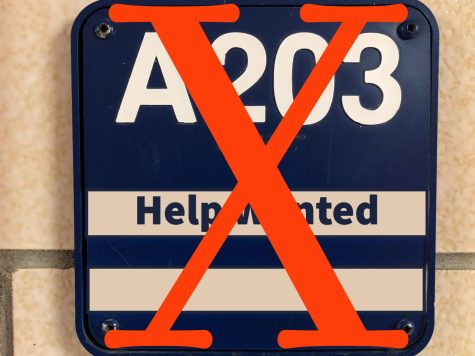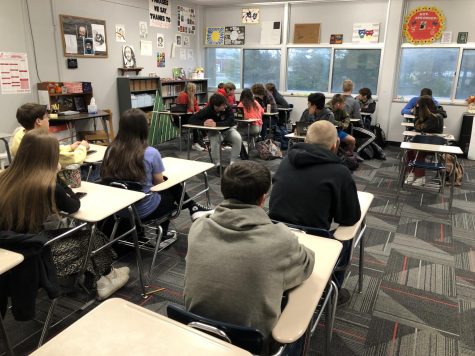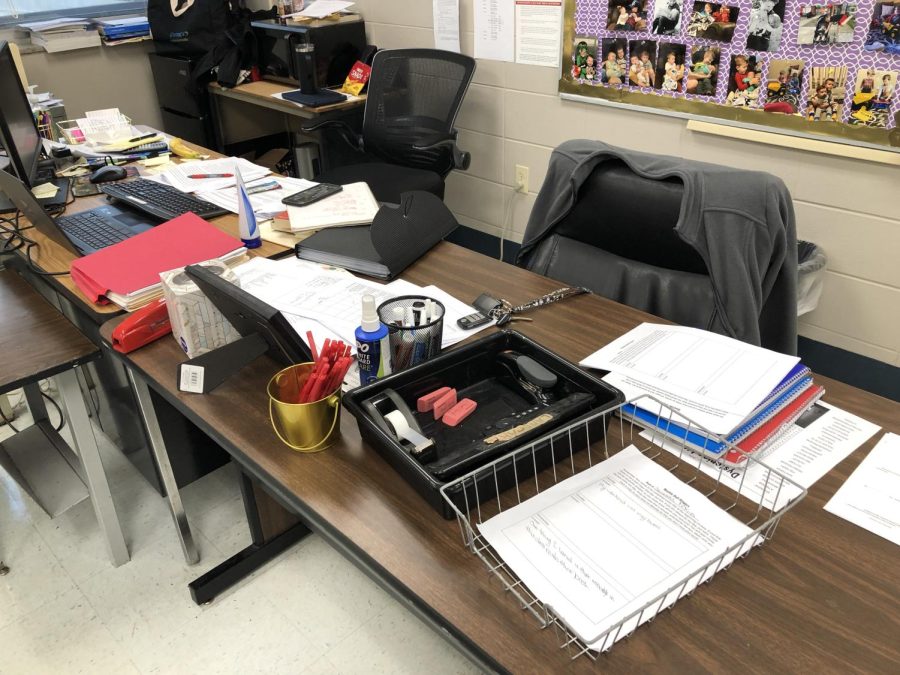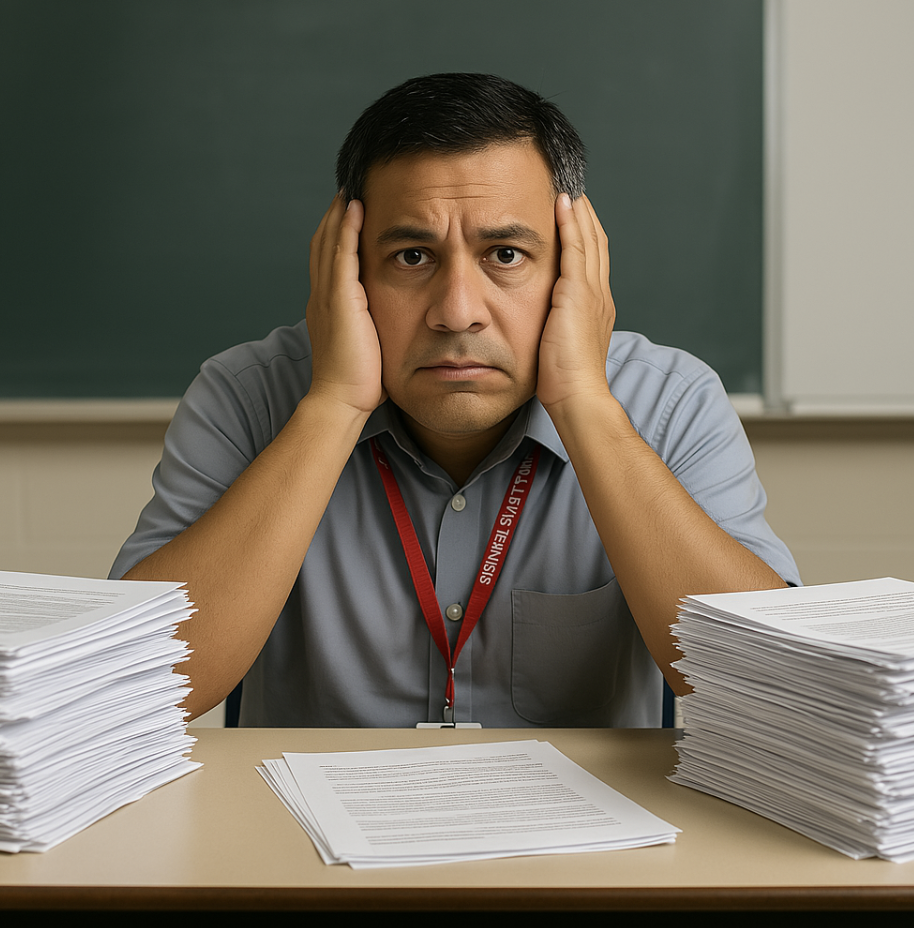National Teacher Shortage Reaches MCHS
November 15, 2022
In a post-Covid-19 pandemic world, society faces various challenges as life returns to normal. Staffing shortages in restaurants and stores have become a fact of life. However, these are not the only institutions facing challenges in finding employees. Throughout the United States, schools have issues filling teaching positions vacancies. These national issues have not spared Madison, with Indiana struggling to find teachers to maintain a high quality of education. While teacher shortages have been an issue for many years, the situation is becoming more desperate.
Kevin Berkopes, CEO of XR Technologies, an Indianapolis company that helps schools outsource their math teaching positions, said in an op/ed featured in the Indy Star that “the main issue today is that the incentives do not exist to attract new talent into education relative to how people live and work in 2022″ (August 14, 2022). This issue has been prominent in society for a long time, especially in the last few years. Teachers do what they do for the love of the job, not the money. “The best part of being a teacher is getting to work with students every day. I love getting to meet such interesting, intelligent, and unique students every year and using our time together to get to know each other and get excited about what they will do with the world,” said MCHS English teacher Cortney Arrowood. Arrowood and the other teachers at MCHS are critical to teaching students and finding ways to support their interests through extracurriculars and other activities.

“I want to be helping kids,” said one MCHS student who plans on becoming a teacher. “I’d rather be helping people than just getting the money.” “The money” is a significant issue many teachers face daily. In Teacher Salaries and Teacher Shortages: The View from the Classroom, a national study performed during the 2020-2021 school year by the Teacher Salary Project, 82% of teachers surveyed reported having to work a second job at some point in their time as a teacher to make ends meet. These statistics indicate the broader issue beyond just filling an opening for a teaching position. In the same survey, 45% also responded that their salary was insufficient to keep them working in the classroom long-term. On top of that, 97% of respondents said their district was experiencing teacher shortages, with 91% displaying that small salaries directly contributed to the deficit.
The classroom transition from in-person to virtual was a major catalyst for many of these issues schools face. “We’ve always been fighting for respect in the profession. Then, the pandemic hit and exacerbated the challenges that we have…” said US Education Secretary Miguel Cordona in an interview with EducationWeek, “…we’re messaging loud and clear that the teacher shortage is a symptom of a teacher respect issue. That, for me, is really clear”. While the daily Zoom meetings and online worksheets were the best offered at the time, the experience of Covid-19 had had a lasting impact on teachers and their students. In the 2021-2022 ILEARN (Indiana’s Learning Evaluation Assessment Readiness Network) Assessment, an Indiana English Language Arts comprehension test given to students in third through eighth grade, 41.2% of students tested proficient in E/LA skills (Indiana Department of Education). That number is down from 47.9% proficiency in the 2018-2019 school year, a 6.7% decrease. In a report of the class of 2022’s ACT scores, the national average dropped 0.5 points from 2021 to 19.8 points. ACT also reported that the national average had not been that low since 1991. In addition to that startling statistic, 42% of the 1.3 million US students who took the exam did not meet any of the ACT College Readiness Benchmarks (ACT, 2022).
Madison has not been spared from a teacher shortage. The high school has yet to find a ninth-grade English teacher to fill an opening, despite being in the second quarter of the school year and nearing winter break. There was also a vacant math teacher position near the start of the school year, but MCS was able to fill the position by outsourcing to XR Technologies, a third-party company (XR Technologies). These shortages are putting a strain on the current teaching staff. “I have had to help manage the three freshmen English classes that currently do not have a teacher in our building,” said Arrowood, “My colleagues have been great pitching in, but we are all struggling to plan, prep, and grade extra classes on top of what we are already responsible for in our own rooms. Teaching is more than a full-time job, and taking on extra classes adds an extra burden that is difficult to manage”.

Recently, MCS Superintendent Dr. Teresa Brown approved an across-the-board $5,000 raise for MCS employees to curb the shortage locally.
“Over the last several years, we have begun to experience difficulty in filling most positions in our school districts. The teacher shortage has greatly impacted our ability to find staff and retain them in teaching positions. We value our teachers for all they do and want only the best for our students,” Brown stated. “We recently increased teacher salaries in Madison by $5,000 across the board to become more competitive with neighboring school districts and to send a clear message to our staff that we appreciate and value them and want them to be well compensated.”
With the first quarter of the school year now complete and the second quarter soon coming to a close, the MCS administration is still looking for solutions to staffing shortages. Unable to find full-time teachers, schools are forced to use substitutes regularly, and other teachers have to shoulder the burden of creating class material and grading assignments. Consequently, the lack of personnel, unfortunately, lowers the quality of education for students, at no fault of the teachers, because teachers are spread thinner than they ever have been. Student performance in the classroom is suffering as test scores drop. If districts are hesitant to raise pay to address staffing issues or pay increases fail to combat the problem, correcting the shortage will undoubtedly take creative solutions to get teachers and students back on the right track.















